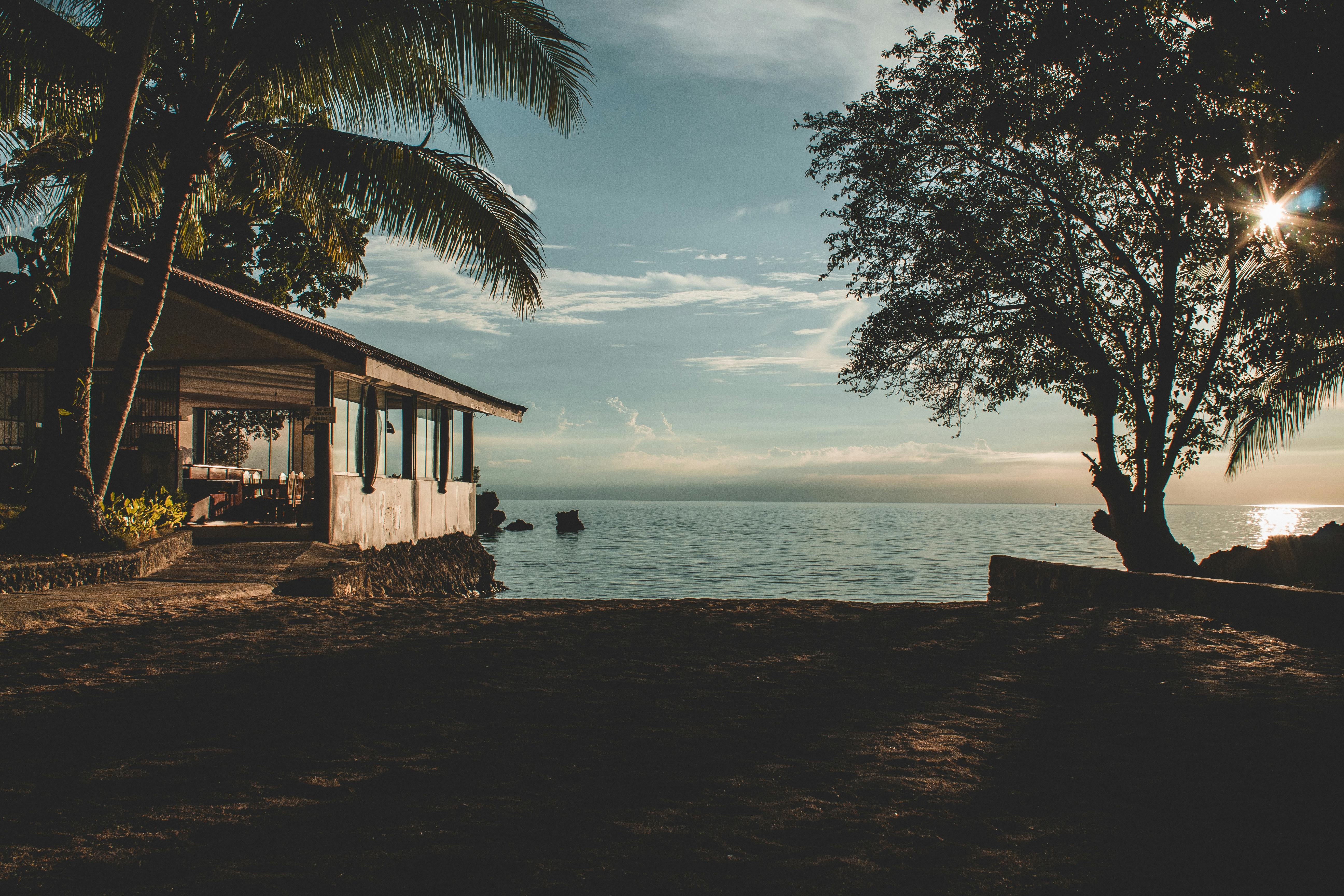Distilling water at home is a great way to ensure you are drinking clean, safe water that is free from contaminants. Distilling water involves boiling the water and then collecting the steam that rises from it. This steam, or vapor, is then condensed back into liquid form and collected as distilled water. This process of distillation can help remove bacteria, viruses, heavy metals, and other impurities from your drinking water. In this article, we will discuss the steps involved in distilling your own water at home.To distill water at home, you will need a few basic items. First, you will need a large pot and lid. Then, you will need a bowl that fits inside the pot. Lastly, you will need an ice cube tray or several ice cubes. Begin by filling the pot with water and place the bowl in the center of the pot. Place the lid on top of the pot and turn on medium heat until steam starts to come out from under the lid. As soon as steam is visible, take your ice cubes or ice cube tray and place them on top of the lid. The condensation from this steam will collect on the underside of the lid and then drip into the bowl in the center of the pot. This water is now distilled and can be used for drinking or cooking purposes.
Supplies Needed to Distill Water
Distilling water is a process of purifying water by removing all contaminants. To distill water at home, you will need to have certain supplies on hand. These include a heat source, a container for the water, and a condensing device. You will also need some type of filtering material and/or activated carbon to remove any impurities. Additionally, you may need additional supplies depending on the type of distillation method you choose to use.
The most important supply needed for distilling water at home is a heat source. This can be anything from an electrical heating element or stovetop burner to a campfire or gas grill. Once you have your heat source in place, you will need something to put the contaminated water in such as a pot or kettle.
Another important supply needed for distilling water is a condensing device. This can be anything from an old fashioned “still” with tubing and buckets to a modern countertop distiller. The purpose of the condenser is to cool the steam generated during the distillation process so that it can be collected as purified water.
In addition to these basic supplies, you may also need some type of filtering material such as activated carbon or ceramic filters to further purify the distilled water and remove any remaining impurities or contaminants. Depending on your chosen method of distillation, you may also need additional items such as tubing, funnels, and other related items.
Setting Up the Distillation Process
Distillation is a process used to separate and purify liquids by boiling them and then condensing the vapor. It is a commonly used technique in the chemical industry, particularly for producing alcohol. To set up a distillation process, you first need to select an appropriate still, which can be either a pot still or a column still. The type of still you choose will depend on the type of liquid you are trying to distill. Once you have chosen your still, you’ll need to assemble it and attach all necessary components such as hoses, thermometers, and condensers. After that, it’s time to fill the still with your liquid and start the boiling process. During this process, you’ll need to monitor the temperature closely to ensure that it doesn’t exceed the boiling point of your liquid or else it could result in an explosive reaction! Finally, once your distillation is complete, make sure to clean up afterwards and dispose of any waste products properly.
In addition to setting up the distillation process itself, there are several other factors that may affect its efficiency. For example, if you are working with an alcoholic solution that contains sugars or other impurities such as proteins or lipids, then these components must be removed before distillation can occur. This can be done through a process known as “mashing” which involves combining hot water with grains such as barley or wheat in order to break down these substances into simple sugars which can then be distilled away. As well as mashing, another important factor that affects how efficiently your distillation works is temperature control; if either too little heat or too much heat is applied during distillation then this could lead to an inefficient separation of liquids.
Finally, if possible it’s always best practice to use purification techniques such as filtration or activated carbon adsorption before starting any kind of distillation process in order to remove any remaining impurities from your solution prior to boiling. This will help ensure that your final product is free from contaminants and as pure as possible!
Boiling the Water
Boiling water is an easy and effective way to ensure safe drinking water. Boiling is the preferred method of disinfection when no other methods are available. Boiling water will kill any existing microorganisms and make the water safe to drink. It is important to remember that boiling water does not remove particulate matter or other contaminants, so it is important to filter any sediment or other contaminants before boiling. Boiling should also be done for at least one full minute at altitudes lower than 6,500 feet. At higher altitudes, boiling should be done for three minutes or more.
Boiling is a simple and effective way to purify water, but it does require energy and time. To reduce energy consumption, use a pot with a tight-fitting lid, as this will reduce the amount of time it takes for the water to come to a boil. Once the water has reached a rolling boil, turn off the heat and let it sit for several minutes before drinking it or using it for food preparation.
Boiled water can be stored in a clean container with a tight fitting lid if necessary. It’s important to label the container “boiled,” as this will prevent someone from mistakenly drinking untreated water if they don’t know where it came from. Boiled water can be used immediately or stored in the refrigerator for up to two days before discarding it.
In conclusion, boiling is an easy and effective way to purify drinking water when no other methods are available. While boiling does not remove sediment or other contaminants, it will kill any existing microorganisms and make the water safe to drink. Be sure to boil for at least one minute at lower altitudes and up to three minutes at higher altitudes before consuming boiled water or using it for food preparation, and store boiled water in a clean container with a tight-fitting lid if necessary.
Letting the Water Cool
It is an important process of preparing the water for use. Without this process, water may contain bacteria and other contaminants that can be harmful to health. The process of letting the water cool can be done in a variety of ways, depending on the type of water that is being prepared. If the water is from a well or other source that contains minerals, it should be boiled before cooling. Boiling removes any contaminants that may be present in the water. After boiling, the water should be allowed to cool naturally before it is used.
If the water is from a municipal source such as a faucet or tap, it should not be boiled but rather allowed to cool on its own. This can take up to several hours depending on how hot the water was when it first came out of the tap. Once cooled, it should be used for drinking and cooking purposes only as there may still be bacteria present even after cooling.
Finally, if the water is from a lake or river, it should never be consumed without proper purification first. Boiling and cooling are not sufficient for removing all contaminants from these sources of water and additional purification methods such as filtration are necessary before drinking or cooking with this type of water.
No matter what type of source your water comes from, letting it cool before use is an important step in ensuring clean and safe drinking and cooking water for your family. Taking this extra time to let your water cool can help you avoid potential health risks due to contaminated drinking or cooking supplies.

Collecting the Condensed Steam
Condensation is the process of turning steam back into water. It occurs when steam is cooled, which can be done through several methods. One way to collect the condensed steam is using a condenser. A condenser is a device that helps cool hot gases or vapors, converting them back into liquid form. Condensers come in many shapes and sizes depending on the application they are used for. They are typically made out of metal and have heat exchanger tubes inside that help absorb heat from the steam and transfer it to the surrounding air. The cooled steam then passes through a condensate collection tank, where it is collected and stored until needed. The water collected in this way can then be reused or disposed of depending on its quality.
Another method for collecting condensed steam is through evaporative cooling, which involves passing the hot vapors through a series of water sprays or misting nozzles. As the hot vapors pass through the water droplets, they absorb heat from them and cool down, eventually condensing into liquid form and dripping down into a collection tank. This method can be used to cool large volumes of steam quickly and efficiently without using any external energy sources.
A third method for collecting condensed steam involves using cooling towers. Cooling towers use large fans to draw air over water-cooled coils to remove heat from the air that passes through them. The cooled air then passes over a condenser coil, where it absorbs heat from the vaporized steam and converts it back into liquid form before being collected in a collection tank. This method requires significant energy input, but it can be used for cooling large volumes of steam quickly and efficiently.
The above methods are just some of the ways that condensed steam can be collected and reused or disposed of safely. Depending on your specific needs, you may need to employ one or more of these methods in order to get the most out of your system while minimizing energy consumption and waste production.

